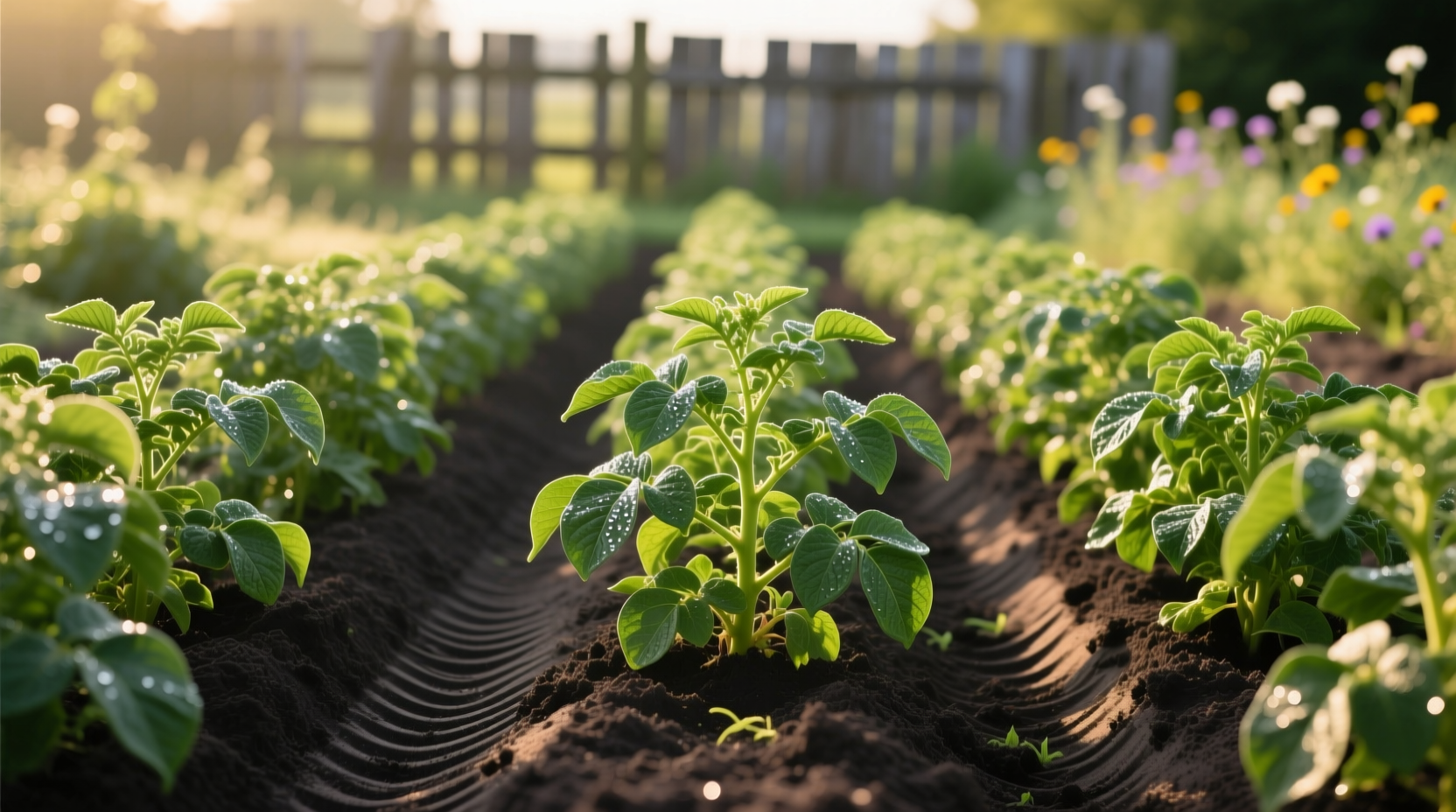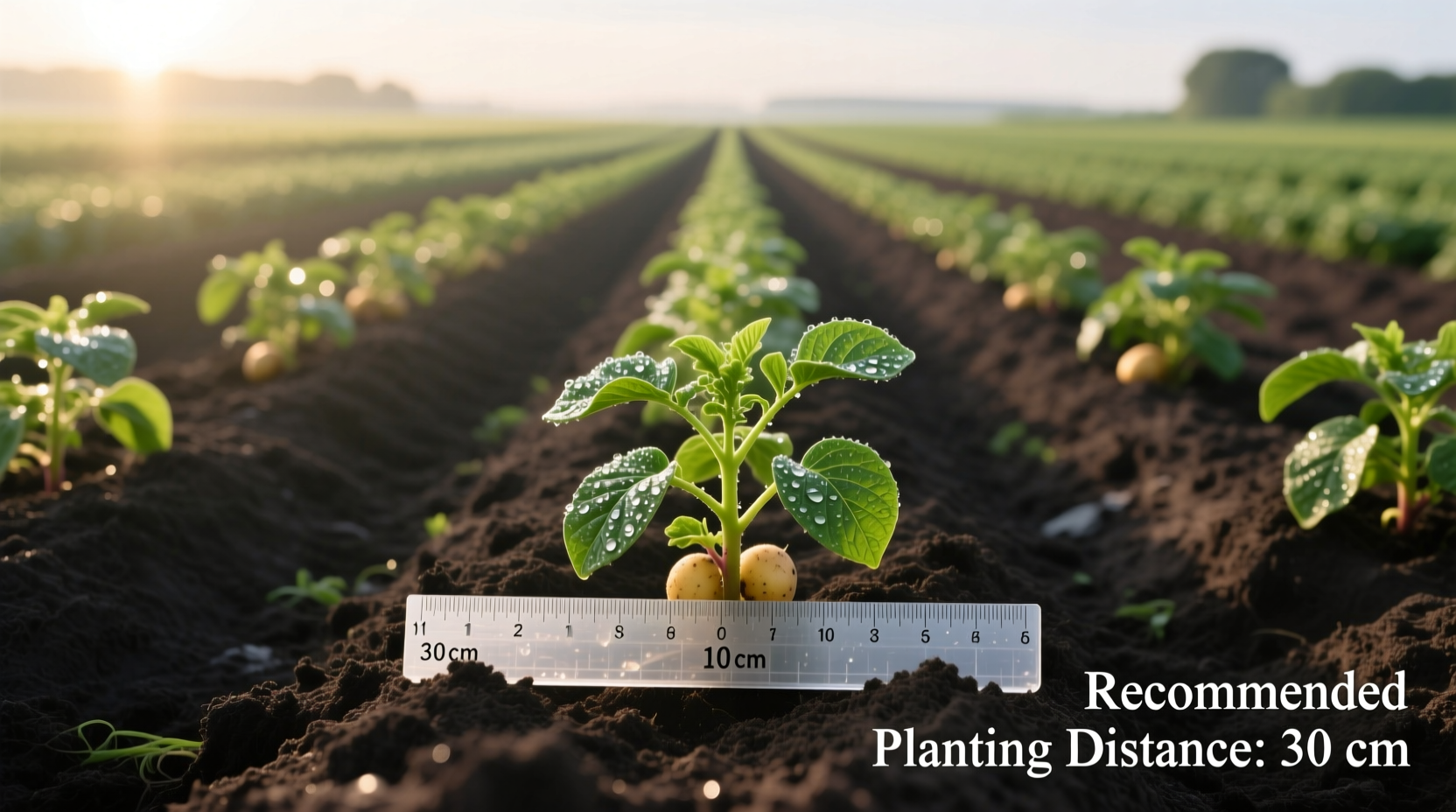Plant potatoes 12-15 inches (30-38 cm) apart within rows and space rows 24-36 inches (60-90 cm) apart for optimal growth and maximum yield. Early varieties can be planted slightly closer at 10-12 inches, while large maincrop potatoes need the full 15 inches between plants.
Why Proper Potato Spacing Matters for Your Harvest
Getting potato planting distance right isn't just gardening advice—it directly impacts your harvest quality and quantity. When plants compete for resources, you'll face smaller tubers, increased disease risk, and disappointing yields. Research from agricultural institutions confirms that proper spacing allows each plant to develop fully without competing for sunlight, water, and nutrients.
Your Step-by-Step Potato Spacing Guide
Planning Your Potato Layout
Before you plant, understand how different factors affect ideal potato planting distance. The standard recommendation works for most home gardeners, but adjustments may be needed based on your specific conditions.
Standard Spacing Measurements
Follow these proven measurements for reliable results:
- In-row spacing: 12-15 inches (30-38 cm) between seed potatoes
- Row spacing: 24-36 inches (60-90 cm) between rows
- Planting depth: 3-4 inches (7-10 cm) initially, with additional soil added as plants grow
| Potato Type | In-Row Spacing | Row Spacing | Special Notes |
|---|---|---|---|
| Early varieties | 10-12 inches (25-30 cm) | 24 inches (60 cm) | Shorter growing season, smaller plants |
| Maincrop varieties | 12-15 inches (30-38 cm) | 30-36 inches (75-90 cm) | Larger plants, longer season |
| Sweet potatoes | 12-18 inches (30-45 cm) | 36-48 inches (90-120 cm) | Vining growth habit requires more space |
How Planting Method Affects Spacing Requirements
Your chosen growing technique significantly impacts ideal potato planting distance. Different methods have specific spatial requirements:
Traditional In-Ground Planting
The standard spacing guidelines apply here. Dig trenches 3-4 inches deep, place seed potatoes with eyes facing up, and cover with soil. As plants reach 6-8 inches tall, mound additional soil around the base (hilling) to encourage more tuber development.
Raised Bed Cultivation
Raised beds allow slightly closer spacing due to improved soil conditions. You can reduce row spacing to 24-30 inches while maintaining the same in-row distance. The improved drainage in raised beds helps prevent tuber rot when plants are slightly closer together.
Container Growing
For containers, use one seed potato per 5-gallon bucket or one per square foot of container space. Larger containers (15+ gallons) can accommodate two plants with at least 12 inches between them. Ensure containers have adequate drainage holes to prevent waterlogging.

Common Spacing Mistakes and Their Consequences
Many gardeners make spacing errors that compromise their harvest. Understanding these pitfalls helps you avoid them:
- Planting too close: Results in smaller tubers, increased disease transmission, and poor air circulation. Research from Cornell University shows yields can decrease by up to 40% when plants are spaced less than 10 inches apart.
- Planting too far apart: Wastes garden space and reduces overall yield per square foot, though individual tubers may be larger.
- Inconsistent spacing: Creates uneven competition, leading to some plants dominating others.
Adjusting Spacing for Your Specific Conditions
While standard measurements work for most situations, consider these factors when determining your ideal potato planting distance:
- Soil fertility: Richer soils can support slightly closer spacing as nutrients are more abundant
- Water availability: In drier conditions, increase spacing to reduce competition for moisture
- Variety size: Larger potato varieties need more space than compact types
- Climate: In cooler climates with shorter growing seasons, slightly closer spacing can maximize yield
When to Hill Your Potato Plants
Proper hilling complements correct potato planting distance. When plants reach 6-8 inches tall, mound additional soil around the base, leaving only the top leaves exposed. Repeat this process every 2-3 weeks until the rows are 6-8 inches high. This technique:
- Prevents tubers from turning green from sun exposure
- Encourages additional tuber formation along the stem
- Improves drainage around developing plants
Measuring for Perfect Spacing Every Time
Use these practical techniques to ensure accurate potato planting distance:
- Create a simple spacing tool by marking 12-15 inch intervals on a stick or board
- Use a measuring tape along your planting trench before placing seed potatoes
- For large plantings, stretch a string between stakes to maintain straight rows
- Consider using a specialized potato planting tool with built-in spacing guides
How Spacing Affects Harvest Timing and Yield
Research from the University of Maine Extension shows that proper spacing directly impacts both harvest timing and total yield. Correctly spaced plants typically produce 20-30% more marketable tubers than overcrowded plantings. The improved air circulation also reduces disease pressure, leading to healthier plants throughout the growing season.
Spacing for Succession Planting
If you're planting multiple crops throughout the season, adjust your spacing strategy:
- Early varieties: Plant at 10-12 inch spacing with 24 inch rows
- Mid-season varieties: Use standard 12-15 inch spacing
- Late-season varieties: Give extra space at 15 inches with 36 inch rows
This approach maximizes your garden space while ensuring each crop has optimal growing conditions.











 浙公网安备
33010002000092号
浙公网安备
33010002000092号 浙B2-20120091-4
浙B2-20120091-4